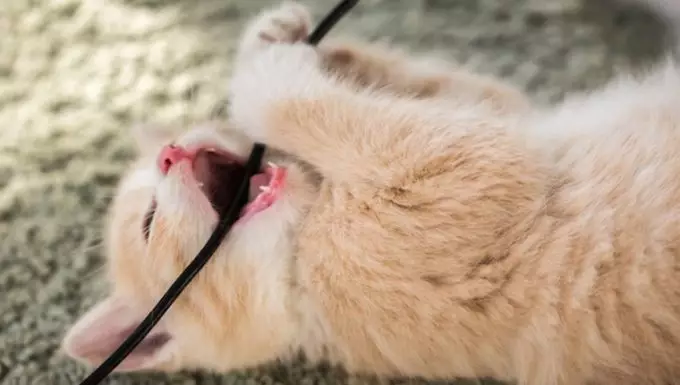Cats are curious creatures by nature, and their tendency to explore their environment can sometimes lead to dangerous situations, particularly when it comes to electrical cords. One significant risk that cat owners should be wary of is electric cord bite injury, a condition that occurs when a cat bites through an electrical wire and suffers from electrocution. This serious situation not only poses the immediate risk of severe physical harm but can also be fatal in some cases.
The manifestations of electric cord bite injuries in cats can be alarming. Pet owners should be vigilant for a variety of signs that may indicate their cat has experienced such an incident. These symptoms include but are not limited to:
– Burns around the mouth or paws
– Coughing or labored breathing
– Rapid respiratory rate
– Vomiting
– Seizures or convulsions
– Cardiac irregularities or arrest
– Cyanosis, evidenced by a bluish tinge to the skin
– Loss of consciousness or collapse
If any of these symptoms appear after a cat has bitten through an electrical cord, immediate veterinary attention is critical.
The primary cause of electrocution in cats is, unsurprisingly, the act of biting an electrical cord. However, several underlying factors may increase the likelihood of such incidents. Frayed wires, faulty electrical systems, or even natural events like lightning strikes can also lead to dangerous encounters. Interestingly, younger cats tend to be more susceptible to these injuries due to their playful nature and propensity to investigate hazards without caution.
When a cat is suspected of suffering from an electric cord bite injury, swift action is required. A veterinarian will typically initiate the diagnosis by inquiring about the symptoms and the circumstances that may have led to the incident. Following this, a thorough physical examination is conducted, often supplemented by blood and urine tests, to assess the extent of any internal damage. An electrocardiogram (EKG) may also be performed to check for heart complications.
The treatment approach is contingent upon the severity of the symptoms. Mild cases may require observational care, whereas severe cases might necessitate intravenous fluids and pain management medications. An important aspect of recovery involves providing a calm environment at home and scheduling follow-up visits to monitor the cat’s healing progress.
Ultimately, prevention stands as the most effective strategy against electric cord bite injuries. Cat owners can take several proactive steps to safeguard their feline friends. Strategies include securing or concealing electrical cords, employing protective coverings, and diversifying a cat’s environment with safe toys and stimulating activities to deter them from chewing on cords.
While the danger of electric cord bite injuries in cats is real and prevalent, awareness and preventive measures can significantly reduce risks. By understanding the symptoms, causes, and treatment options, pet owners can play an active role in protecting their beloved companions from harm. Prioritizing safety for our pets not only ensures their well-being but also fosters a harmonious living environment for both cats and owners alike.


Leave a Reply